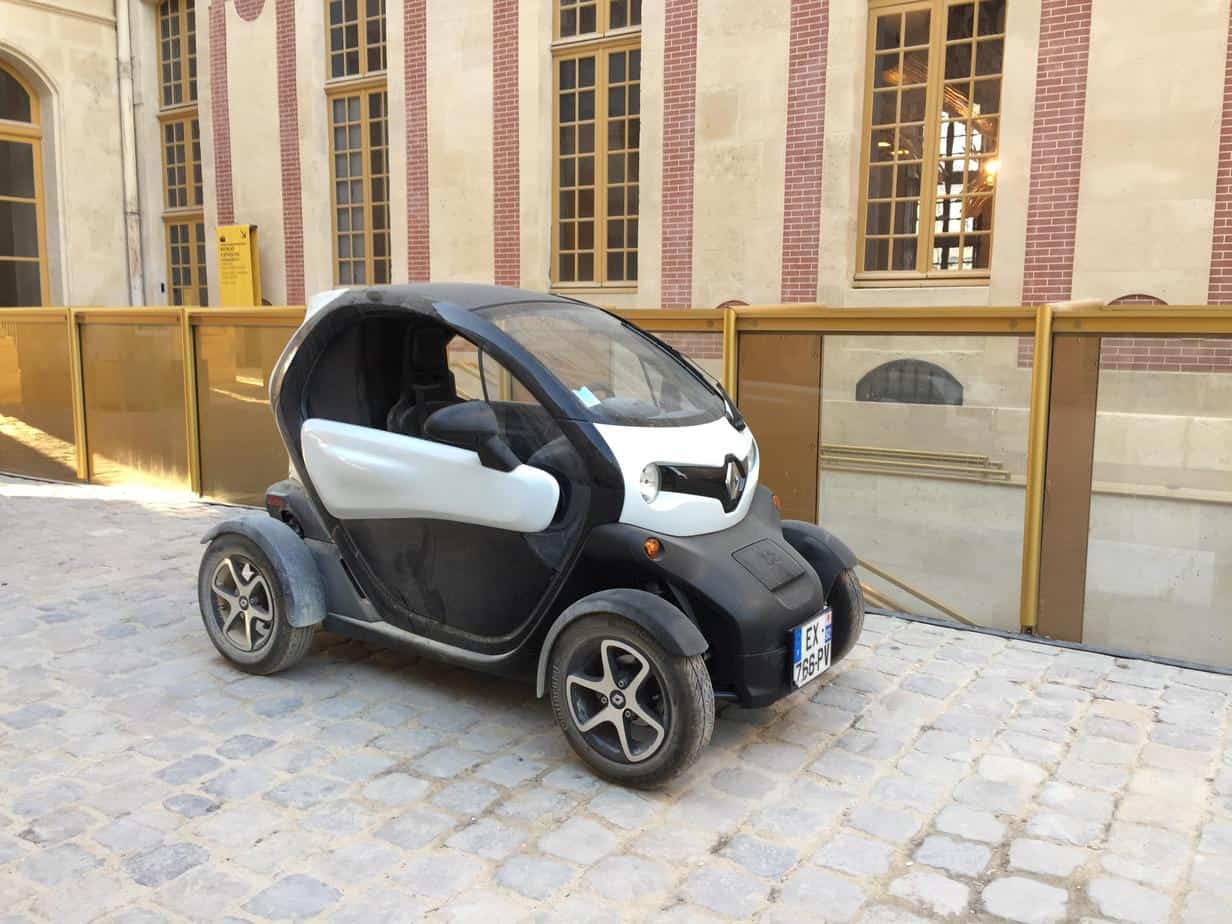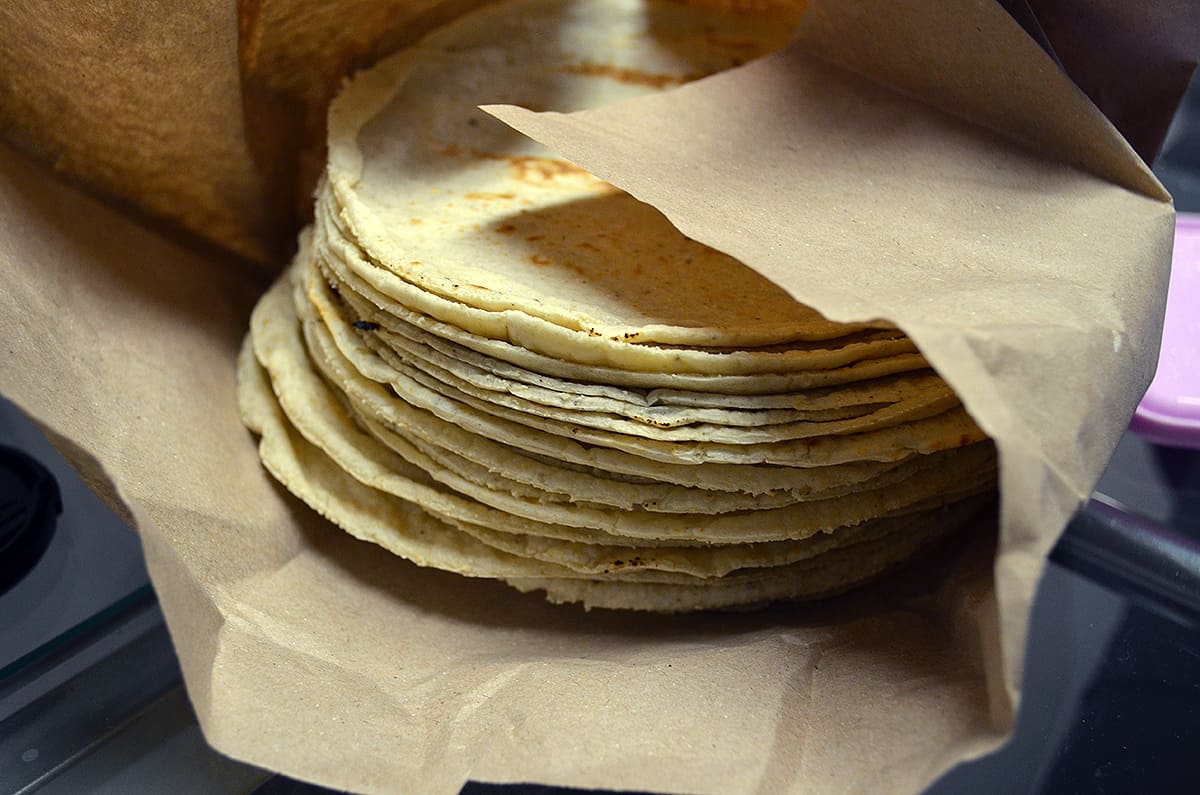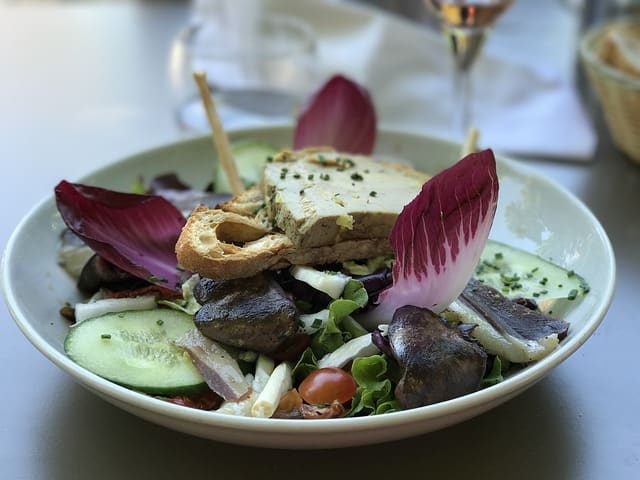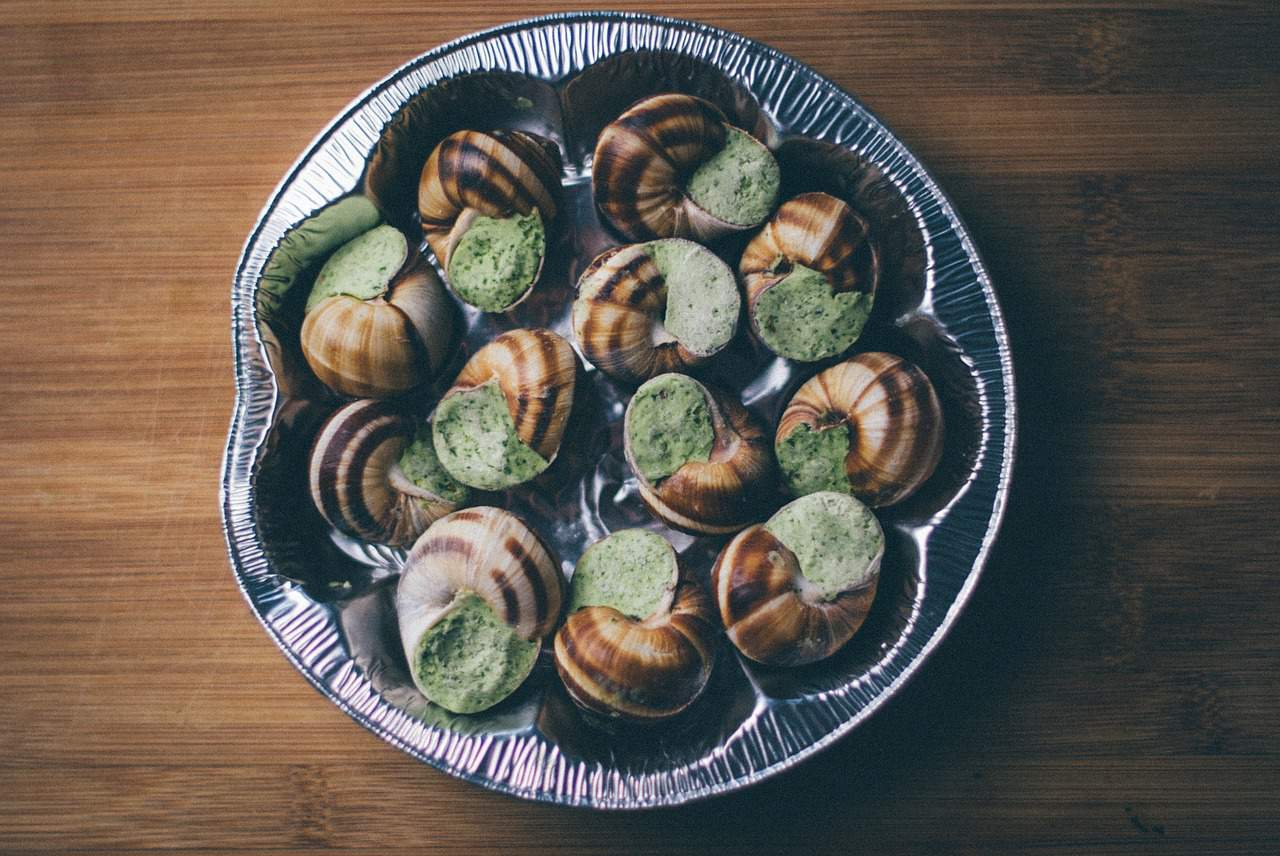The internet can be a strange place. Just how strange? Well, just you wait and see. In this article, we’ll be going through some of the craziest questions about France that you can find on the internet.
To be fair, not all questions on this list is ridiculous. There are some questions that French people might not give too much thought about, but simply stump those who live outside of France.
So are you ready? Let’s check them all out!

Question #1: France is bacon?

Ha! Not sure if the asker is trying to be witty with the wordplay or just plain nuts. But to answer the question, no, France is not bacon.

France is a country not a delicious strip of salt-cured goodness that a lot of people can’t seem to get enough of.
“But what about figuratively?” you insist.
Well, if you love France as much as you love bacon, then I must begrudgingly admit that France might be bacon after all.
Next!
Question No. 2: Has France ever won a war?
This question was asked by an innocent (or malicious? I can’t tell) soul in Quora and I’m glad at the opportunity to set things straight.
A resounding yes. Hell yes. France has won wars. But don’t take my word for it. I’ll let historian Niall Ferguson answer it with this response:
France has a long history of warfare. From 387 BC, the French have fought 168 battles and won 109, lost 49, and 10 were draws.
So whatever sentiment is behind this question, I’m not going to add my ten cents anymore and let’s just leave it at that.
Cool? Cool.
Question No. 3. Is toilet paper in France really pink?
Another question from Quora. This is a bizarre one alright. Who’d have thought someone would actually find time to dwell on the color of toilet paper? But since this question is out there bugging and puzzling some people, it warrants an answer.
Yes there are pink toilet paper in France. But it’s not the only toilet paper color available. There’s white which is the most common, there’s light blue, some are green, some are white with tiny prints on it. It varies.
The pink ones are mostly scented so if you want something perfumed to wipe your behind, then you’d love the pink one.

But I’m not comfortable with where this answer is headed so let’s proceed to the next question.
Question #4. Who is the most French person ever?
Ah, a question that though is still kinda weird, makes a lot more sense than the last one. Personally I’d have to say that the most French person to ever exist is Serge Gainsbourg.

When I think of the epitome of being a French person, I will automatically think of Serge Gainsbourg. Like the idea of a “true French”, he’s not necessarily the most athletic person, he’s a heavy smoker, a great songwriter, a womanizer, and certainly not a conformist. That and his iconic look of jeans with Repetto shoes. Very French indeed.
Alain Delon and Brigitte Bardot also come to mind but for different reasons. Both beautiful actors played roles that can be considered by foreigners as the French cliché.
I think the golden era of French icons has already passed. I cannot think of any current French person who perfectly embodies the qualities of what can be considered a true French.
Question No 5: How do French people fit in such small cars?
This question gets asked around a lot in the internet. People all over internetland are scratching their heads wondering just what is up with the little car thing in France.
One user in Twitter went as far as suggesting that French cars were originally made for little people.

So how does a regular-sized French person fit into this? (Via reddit)
Is it like an enchanted device that looks small but is surprisingly spacious inside? What kind of tricks or sorcery do the French employ?
Well, I’m here to tell you that no ancient Gallic magic is involved in this. Let’s address the questions about small cars one by one.
“Why do the French drive such tiny cars?”
If the guy was driving a monster-sized truck, would it be able to fit in that sweet little parking spot?
There are several other deeper reasons perhaps but for now, let’s stick with those.
“Can the French fit into these cars at all?”
Well, we’re driving these cars so certainly we must fit, otherwise you’d only find children or little people driving those.
But all shade aside though, yes the French do fit into their small cars. And their husband or wife and kid would fit as well.
Is it perhaps something to do with not being fat? Most likely. The French diet is such a wonder bordering on miraculous that despite having lots of meat, butter, pastries, cheese, and other sinful creations, French people seldom get fat at all. Read more about French Food Habits here.
Now let’s proceed to the next question.
Question # 6. Why do French people eat bread that can break their teeth?
Someone in Twitter asked this question about crusty French bread like the baguette.

Ahh, the baguette. That iconic long piece of bread that foreigners think of when they talk about French cliches. It comes with the beret, the stripy marinière shirt, and the fancy mustache.
But while the French seldom wear a beret and a marinière shirt, and may or may not opt for a fancy mustache, we do love our baguettes.
Now could a baguette really break an unsuspecting person’s teeth? It’s an accident that could happen, I guess. When it does, simply head straight to the dentist and tell them your pitiful tale of woe brought about by biting a day-old baguette.
You see, freshly baked baguettes are usually soft with a thin crust. After a day however, it could turn hard. Give it a little more time and you and your teeth will be at its mercy.
But there are ways to avoid this. You can retain the softness of the baguette by wrapping it in a dish towel. Some would go as far as putting the bread into water and grilling it in the oven.Question # 7: Why don’t French people use ice?

You see this question popping up on the internet a lot so it seems to be really mind-boggling to many people. First of all, this somehow boils down to tradition. The French are simply not used to drinking beverages filled to the brim with ice cubes. So when you’re in French restaurants, expect to see no ice or a few of them floating on your drink.
But there are more reasons for that:
While there may be other reasons for not putting ice in drinks, in the end it’s all about preference. So when you’re in France and would rather have an icy drink, go ahead and ask. But like they say, when in Rome, might as well do as the Romans do!
Question No. 8: Do French people not believe in air conditioning?
No, we don't believe in this kind of god. Jokes aside, the weather in France is not as harsh compared to other areas with more humidity.
We tend to have warmer summers for the past few years (due to climate change) so people tend to buy more and more air conditioning. But the cost of air conditioning is not necessarily worth the hassle for many French.
Besides, it makes their house look ugly with the big air extractor jutting in the walls. But I won't be surprised to see more houses having air conditioning from this point.
Question No. 9. Why do French people call tortillas crêpes?
One guy asked on Twitter why French people refer to tortillas as crêpes.
My answer: Easy. Because tortillas are not crêpes!
These are crêpes.

These are Mexican/ Latin American tortillas.

Almost looks the same, right?
But aside from looking like close cousins, that’s probably where the similarities end.
You’ll also have to distinguish between tortilla from Spain and tortilla from Mexico and Latin America. Spanish tortilla is a dense omelet made of potatoes and egg.
Question No.10: Why do French people not have scurvy? Do they even eat salads at all?
A pile of pastries---check.
A truckload of cheese--check.
An entire vineyard’s worth of wine--check.
But is it really true that you won’t see the French take even a whiff of a salad?
I don’t speak for all French people, but I’d have to answer that actually, yes, the French do eat salads, veggies or fruits.
Most of the food you eat in a family meal have some type of salad. It could be in the form of a starter, sometimes after the main meal. We also eat fruits. But we also like veggies on the side with a nice piece of meat.
So to answer the question, the entire nation isn’t suffering from massive scurvy outbreaks because we aren’t necessarily vitamin C-deficient.
Question No.11: Why is the French keyboard like that?
There’s the keyboard you know:

And then there’s the AZERTY keyboard used by the French.

I don’t blame you at all for all this confusion.
France uses the AZERTY keyboard---named after the letters on the top left. It’s been around for a while (since the end of the 19th century when typewriters were still being used instead of displayed in hipster shops) and was created as an alternative to the QWERTY keyboard.
The French keyboard was supposedly designed to make typing words in the French language more efficient especially with the usage of accent marks, but only France and Belgium seems to be onboard with it. The Québécois and Swiss francophones still use QWERTY but with extra accent keys.
So to answer the question about why the French keyboard is like that, it’s because the French are used to it and dead-set on using this type of keyboard. Any efforts to change this has been met with staunch resistance so it’s basically futile.
Question No. 12: Why are there no cold milk in French grocery stores?
A lot of people on the internet are wondering why French supermarkets do not refrigerate the milk they’re selling. “Wouldn’t that result to spoilage?”, their worried questions went. So let’s answer this question and try to assuage their worries once and for all.
- 1
France, where Louis Pasteur himself is from, uses a pasteurization technique known as UHT or “ultra high temperature” processing. This means the liquid is blasted with more than 275 degrees Fahrenheit of heat for a couple of seconds. With this process, liquid milk can retain its freshness up to nine months without being refrigerated.
Regular pasteurized milk such as the ones sold in other countries like the US are heated in temperatures between 60 to 100 degrees Fahrenheit. In order to keep from becoming a breeding ground of all kinds of nasties, it has to be kept refrigerated!
- 2There is actually available fresh milk in French grocery stores--the ones that need refrigeration. The people who asked this question probably didn’t look around well enough.
Question No.13: Why do the French say bone apple tea?

Two reasons:
- 1You probably heard it from a witch brewing a concoction of bone, apple, and tea in a boiling cauldron. Except the witch is probably British, not French. The English words and the tea are a dead giveaway.
- 2Your ears are failing you, mon ami. It’s bon appétit which means “enjoy your meal”.
Question No. 14: Do they take “real money” in Paris?
Is this a trick question?
What’s real money, anyway?
What’s real? What’s not?
What is money in the grand scheme of things?
This question is making me have an existential crisis.
But to answer this question from TripAdvisor, France uses the euro, a currency used in 19 European Union countries. Now it’s up to you if you consider euros real money or not.
Question No. 15: Why do French people eat snails?
Because snails (escargots) are an edible--not to mention tasty--delicacy. It’s also low in fat and high in protein.

It would be wrong to assume though that the French are the first (or only) people to eat snails. Snail has been enjoyed by people in Europe and many parts of the world since prehistoric times. The earliest recorded documents of Romans eating snail dishes were recorded by Pliny the Elder in 50 AD, but roasted snails were also discovered in archeological sites.
Snail is consumed in different parts of the world such as in Italy, Spain, Portugal, Greece, Nigeria, Morocco, Philippines, Cambodia, Laos, Japan, Cameroon, and many others. In France, escargots are traditionally eaten with garlic, parsley, and butter, but it also appears in many other types of dishes.
So there you go. I hope I was able to give justice to all the questions above--silly or otherwise.
Conclusion
Do you have burning questions about France, the French people or the French language? Don’t hesitate to ask me at contact@talkinfrench.com.. I will try my best to answer via the weekly newsletter which is read by more than 20,000 subscribers.
You can also subscribe to the newsletter below and get lots of free resources included in the French Learning Package.
SIGN UP BELOW...
AND GET INSTANT ACCESS TO THE FREEBIES

See you around! "À bientôt !"